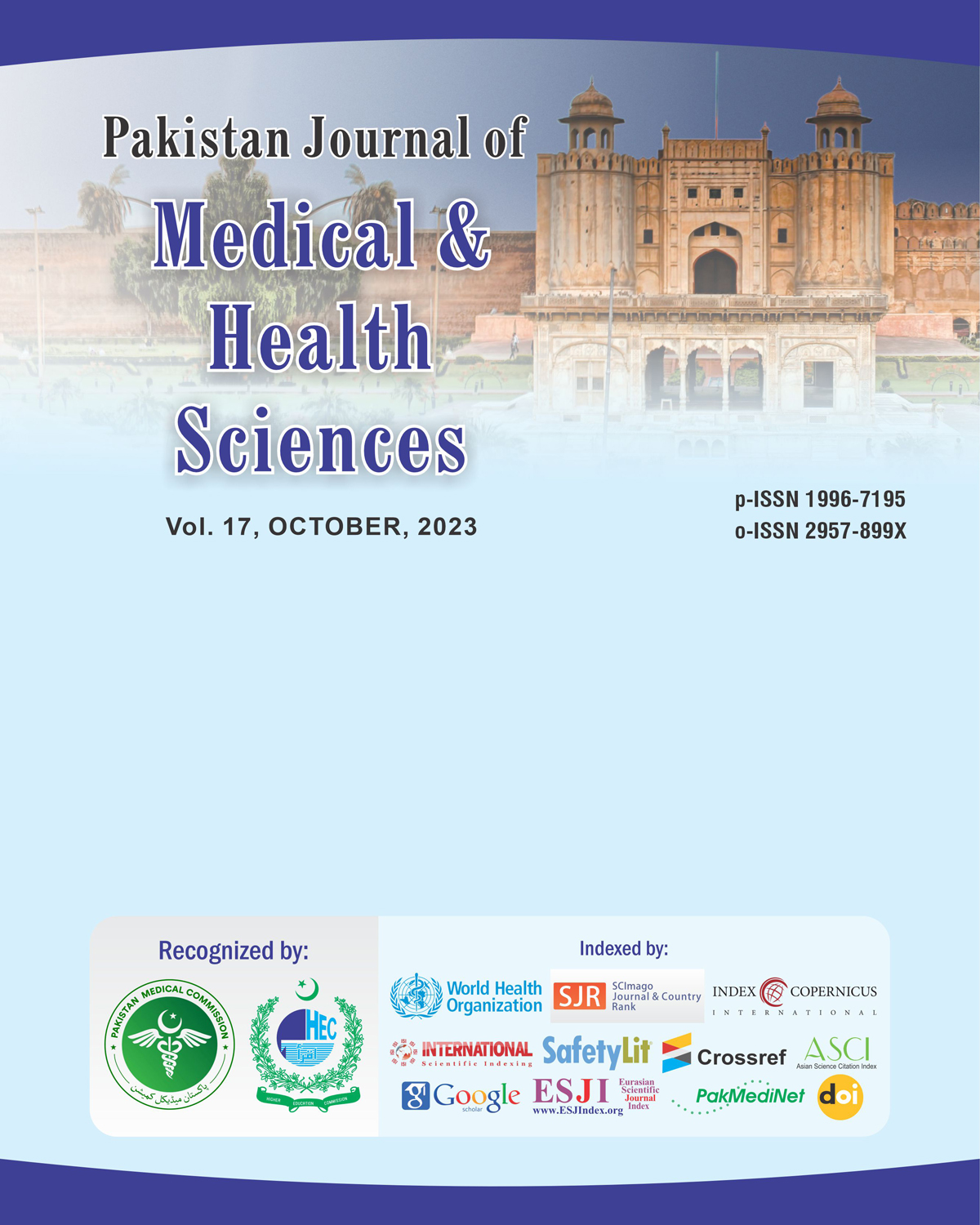Clinical Evaluation of Glycemic Control and Its Role in Diabetic Complication Patterns Among Patients with Type 2 Diabetes Mellitus
DOI:
https://doi.org/10.53350/pjmhs20231710160Abstract
Background: Poor glycemic control is a major burden of microvascular and macrovascular complications associated with type 2 diabetes mellitus (T2DM) in Pakistan. Glycemic control and its relation to complications in government hospital settings are currently poorly described.
Aims and Objectives: This study aimed to find out the glycemic control and its correlation with Diabetic complications in T2DM patients who were attending Lady Reading Hospital MTI Peshawar, Pakistan.
Methodology: A cross-sectional observational study was conducted from June 2022 to June 2023. Convenience sampling was conducted such that a total of 100 adult T2DM patients (≥30 years, duration ≥1 year) were enrolled. Structured interviews were performed, and a medical record review was conducted for demographic and clinical data. HbA1c was obtained and classified as good (<7%), moderate (7–7.9%), or poor (≥8%) to determine glycemic control. Clinical examination and records were used to assess diabetic complications (retinopathy, neuropathy, nephropathy, and cardiovascular disease). Pearson’s correlation and logistic regression were carried out in SPSS version 25.0 for statistical analysis.
Results: Age at diagnosis was 55.6 ± 10.2 years; 52% were female. Only 12% had good glycemic control, and 64% had poor control (HbA1c ≥8%). Neuropathy 42%, retinopathy 36%, nephropathy 28%, and cardiovascular disease 22%, respectively, are complication rates. Complications were significantly correlated with higher HbA1c, retinopathy (r =0.42), neuropathy (r =0.39), nephropathy (r =0.34), and cardiovascular disease (r =0.28) (all p <0.01). As an independent predictor, poor control was confirmed by logistic regression.
Conclusion: Glycemic control was poor and complicated, reflecting the urgent need for better diabetes care, education, and regular screening in public hospitals.
Keywords: Type 2 diabetes mellitus, HbA1c, diabetic complications, neuropathy, retinopathy, nephropathy, Pakistan
Downloads
How to Cite
Issue
Section
License
Copyright (c) 2023 Arshad Ali, Shafaq Nazia, Bedarbakhat Khan, Saima Iram, Zainab Fakhar Ul Qammer, Hashmat Ullah Khan

This work is licensed under a Creative Commons Attribution 4.0 International License.


